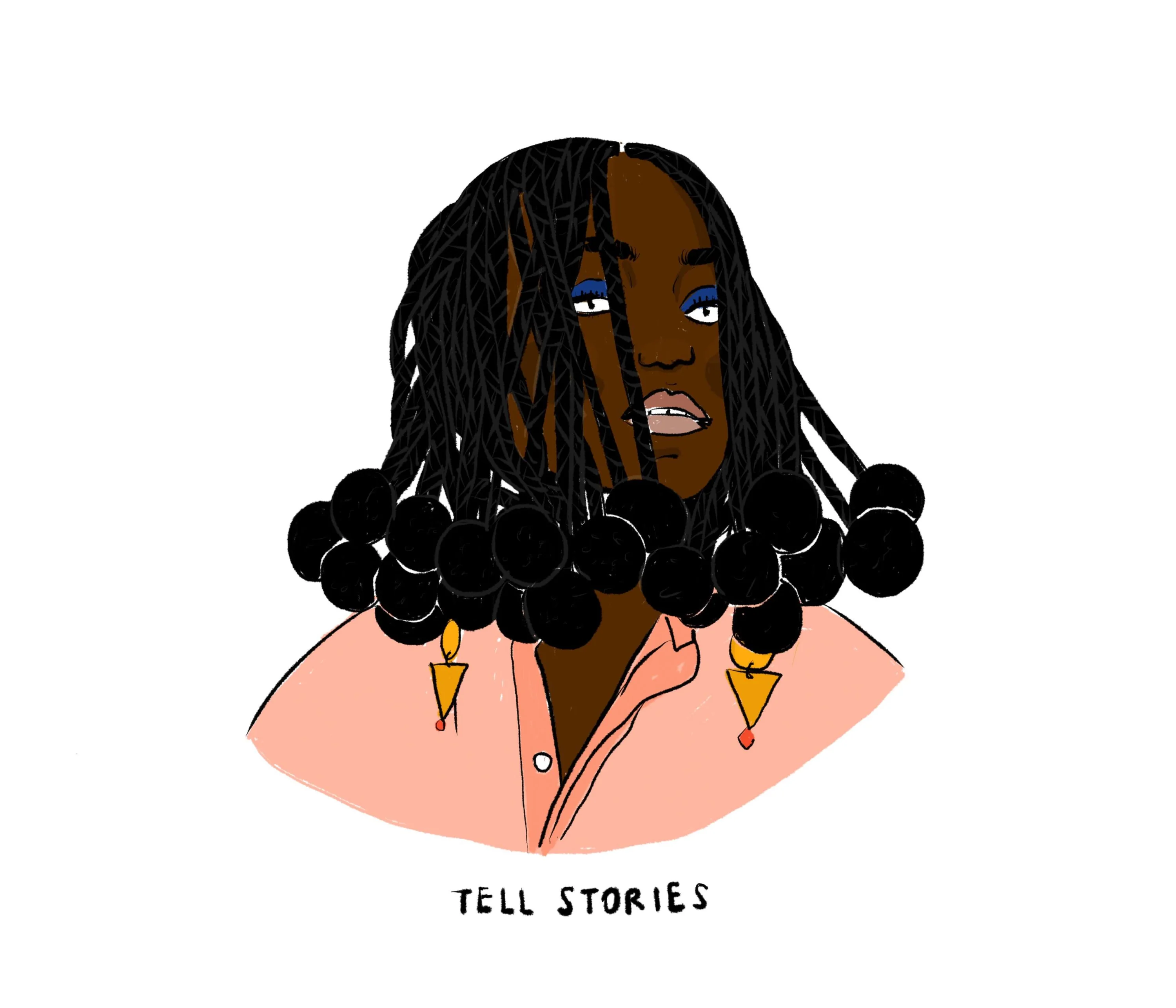

Born in the US to Lebanese parents and raised in both Kuwait and Lebanon, illustrator Nourie Flayhan finds it strange to say she’s from one country.
As a child, she spent time with her mum’s family, who lived in Brazil, Mexico and Venezuela. She doesn’t identify with any single place more than another, and states she never grew up in a community that encouraged, appreciated or understood art. But that was never a barrier. “Our mum built our bubble,” she says.
The family household itself was always artistic. “My mum is an interior designer and dedicated our upbringing to giving us the freedom to celebrate art and express ourselves,” Nourie says. They had a room which was filled solely with easels, paint pots, pencils, clay, beads and mosaics. “It was a little artists’ haven. She kept all our works and has them stored. It really warms my heart,” she adds.

When she left school and it came time to leave Kuwait, Nourie knew she wanted to pursue a career in art, and moved to London to attend University of the Arts London. “I went despite some family members being against it and not understanding,” she says. There seemed to be some disbelief amongst her relatives that art was a viable career path. “Some still don't understand what i do and explaining it to people in my parents’ villages in Lebanon always leaves puzzled faces.”
Nourie did have some exposure to illustration as a child, such as Quentin Blake’s illustrations in her favorite Roald Dahl books, but only really delved into the practice in London. “I came from a textiles background and wanted to continue making using my hands,” she says. Nourie realized illustration allowed her to express herself freely, and she immediately found a connection to it. “Illustration called me in, it welcomed me and I fell in love.”

Art school allowed me to live and breathe art, and taught me to embrace my differences.
She discovered all of this in an old Victorian building that was once a prison, the Chelsea College of Art and Design. “It felt like Narnia, with a cabinet door that led to another world. I was always so mesmerised,” Nourie says. Having been the only student at her school to move into art, she never had the chance to meet and work with others with the same interests. Studying at UAL brought her out of her shell, as she saw different perspectives and forms of expression. “It allowed me to live and breathe art, and taught me to embrace my differences,” she says.



Search Nourie’s illustrations across the web and you’ll see them being described as “woke”. Similarly to some other female illustrators, she depicts an empowered womanhood, but the nuances of her subject matter are what makes her work stand out. She often illustrates those women who have inspired her, such as women’s rights activist Amal Al Basha and writer and sociologist Fatema Mernissi.

I believe each individual carries different faces or masks, and some of us wear them all at once.
What jumps out from her work is the piercing eyes. There’s not always just two eyes per face, though. Some faces have three or four pairs of eyes. Nourie wore glasses as a child, and was often called “four eyes” by the other kids. Some might take this to heart, but she felt like glasses gave her some kind of superpower, and now she thinks her characters’ many eyes show the duality of their personalities. “I believe each individual carries different faces or masks, and some of us wear them all at once,” she says. “I've always observed people and studied the way they interact with others and their surroundings.”
Beyond this, Nourie is simply aware she needs to keep her eyes open to take in inspiration, as she’s done all her life. “There is so much happening around us that you need to turn your four eyes towards: whispers echoing around the walls, the women in my family gathered sitting over matè and picking off the stems of parsley to make tabbouleh for lunch, sharing stories.” She paints a rich picture of the women in her family, women she has always looked up to. They travelled the world at a time when it was considered a luxury, “sending letters to each other with years passing by before they would see each other.”


Nourie didn’t feel represented in the media or in books growing up, so representation is of paramount importance for her. “There are so many women of color I've met in person or through social media who inspire me, and I love sharing their stories. I want to put illustrations out there that women and younger girls can have a connection with,” she says. “It's something I spread in my work, representing all the different women of color who gracefully walk our earth and carry the most beautiful stories.”
Words by Alex Kahl.

